It may sound strange to those who have only been involved in MMA for a short time, but in 2005 the UFC was experiencing moments of financial instability and difficulties in its administration. With ever-increasing investments and questionable returns, the Fertitta brothers, partners at ZUFFA (the company that owns the organization), even considered selling Ultimate. President Dana White never tires of stating that the reality show The Ultimate Fighter is a fundamental factor in the turnaround of the event, which just over nine years later is a global phenomenon.
To better understand the story of the first TUF edition, which premiered on North American television in January 2005, it is necessary to go back in time a few months. Owners of a chain of casinos in Las Vegas, Frank III and Lorenzo Fertitta developed a relationship with producer Craig Piligian, owner of “Pilgrim Studios” and Emmy winner for the acclaimed show “Survivor”. The contact was made through the duo's participation in another Piligian project, the reality show “American Casino”.
Imbued with the desire to popularize the sport and increase the fan base through identification with the fighters, who would be present weekly on cable TV, the managers and the producer began the first conversations about what would become the The Ultimate Fighter. According to Dana White, the project was the UFC's way of reaching an audience that had not yet had contact with the sport. "It was our Trojan Horse. We're going to put the fights on TV, but we'll do it with a reality show", revealed the president in a documentary about 20 years of Ultimate.
But anyone who thinks that, just like in the Trojan War, the organization’s “gift” was well accepted is mistaken. At first, the main TV stations rejected the project, making observations mainly about the violence in the sport – still very influenced by the aggressive marketing of the organization's first tournaments. It took an even greater effort on the part of the UFC for the The Ultimate Fighter finally got off the ground. In order for the recently launched Spike TV channel to accept the production, it had to be fully funded by Ultimate's own coffers. The production cost, in values at the time, was close to US$10 million.
TUF 1 and the turning point in UFC history
Like every first edition, the The Ultimate Fighter 1 Its production was marked by the lack of a defined model. There were problems in selecting the fighters, as the TV channel wanted interesting personalities and the UFC excelled in technical quality inside the Octagon. After the selection stage, inexperience with the format led to some, to say the least, unusual situations. Some fighters didn't know that the duels would be between the 16 residents of the house and others thought they would have the initial six weeks of recording to lose weight, and only then fight once at the end of the program.
READ TOO: TUF news and the future of the reality show
The announcement that they would have to face each other and reach the weight of their categories in just two days did not please the cast, who threatened not to fight because of it. It was then that Dana White gave a huge and eloquent speech questioning the attitude and at the same time motivating the reality show participants. White's statement, which ended with an exhaustive repetition of the question “do you want to be a fighter?”, was directed at several athletes who would later write their names in UFC history, such as Josh koscheck, Kenny Florian, Diego Sanchez, Forrest griffin, Stephan bonnar and Nate Quarry.
But it wasn't just Dana's speech that caught the public's attention. The choice of coaches for the first season was also essential for TUF to be interesting for those already new to MMA. Protagonists of the sport's greatest rivalry at that time, Randy Couture and Chuck Lidell were responsible for leading the teams during the reality show. As a bonus for fans, the rivals would face each other in the Octagon at the end of the show on TV.
TUF 1 was also a pioneer in inaugurating a tradition that would be reproduced in almost all editions of the reality show: jokes between the fighters. Initially, the main exponent of the jokes was Chris Leben, who spent much of the program drunk. In the fifth episode, however, Leben was the target of a revenge plot by Josh koscheck and Bobby Southworth. The atmosphere heated up between the middleweights and Dana White decided that the only way to resolve the issue was to promote a fight between Koscheck and Leben.
But no moment in the program would surpass the event that hosted its finals. Not even the most optimistic producer could have imagined the success of the TUF 1 Finale. On April 9, 2005, the modest Cox Pavilion, in Las Vegas, hosted the first event in UFC history broadcast outside the model pay-per-view. The main fight of Ultimate on cable TV would be the duel between Rich Franklin and Ken Shamrock. The first champion in TUF history was defined in the third-to-last fight of the night, when then-middleweight Diego Sanchez overcame Kenny Florian and won a six-figure contract with Ultimate. But the highlight was entirely due to the final of the The Ultimate Fighter in the light heavyweight category.
The relentless three-round battle between Forrest griffin e Stephan bonnar It is still remembered by Dana White as the most important fight in UFC history. “People who don't know, don't understand how much that fight meant for the sport of MMA and for the company, the UFC,” said the director in an interview on the organization's official website.
The comings and goings of the duel, which took place almost entirely standing up and amidst intense exchanges, caused the audience in the arena to go wild and the audience for the card on Spike TV approached two million viewers. .
At the end of the confrontation, Forrest griffin was declared the winner by unanimous decision of the judges. The announcement of defeat caused Stephan bonnar he threw himself on the ground, in a mixture of exhaustion and disbelief. Still in the octagon, Dana White spoke with Lorenzo Fertitta and, in a surprising decision, also offered Bonnar a six-figure contract with the UFC.
READ TOO: With Brazil, Australia and China, TUF explores the world
The reaction to the spectacle provided by Bonnar and Griffin was not only positive from the fans. Dana White, Frank Fertitta III, Lorenzo Fertitta and Craig Piligian say the contract for the second season of The Ultimate Fighter between the UFC and Spike TV was signed shortly after this fight, in an alley behind Cox Pavilion.
TUF as a path to the belt
The success of the first season of The Ultimate Fighter it can be measured not only by audience ratings or by the way the program is referred to today. Sportingly, the reality show also added a lot to the UFC, as it gave the organization an internal selection mechanism for new talent and the promotion of emerging stars. please note that Forrest griffin not only did he win TUF 1 but, three years later, he became the Ultimate light heavyweight champion. The title shot against Quinton Rampage Jackson it came after the North American was one of the coaches, alongside his rival, in the seventh season of the reality show. Griffin would lose his title in his first defense, against Rashad evans – who had been the winner of TUF 2.
However, the great relationship between the The Ultimate Fighter and the UFC belt was established in TUF 4. After two editions that were very similar to the inaugural one, “TUF: The Comeback” presented itself with a renewed and very attractive formula. All participants in the reality show were former UFC athletes who would have the chance to return to the organization. What's more: the winners of the welterweight and middleweight tournaments would have the right to face, respectively, Georges St Pierre e Anderson Silva by the title.
If Travis Lutter didn't make weight and fight against Anderson Silva, in which he ended up defeated by submission in the second round, was not eligible for the middleweight belt, the organization's initiative at welterweight could not have proved successful. This is because it was through victory in the under-77 kg category tournament that Matt Serra qualified to star in one of the biggest upsets in the history of Ultimate.
On April 7, 2007, in Houston (USA), Serra stepped into the octagon against the favorite Georges St Pierre, who was preparing to defend his recently won welterweight belt for the first time. Even though he was a jiu-jitsu black belt, Serra surprised GSP in his striking and knocked out his rival in the first round.

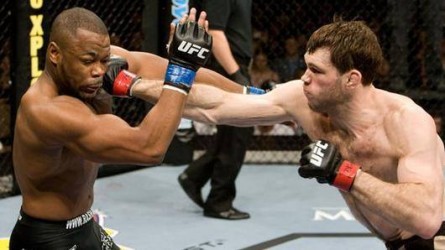
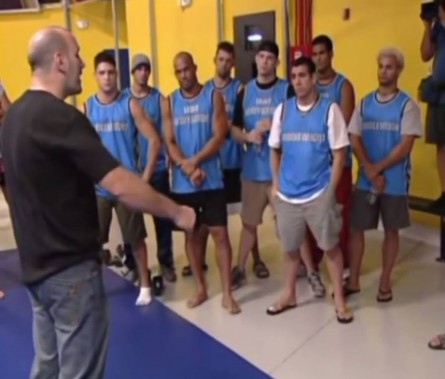
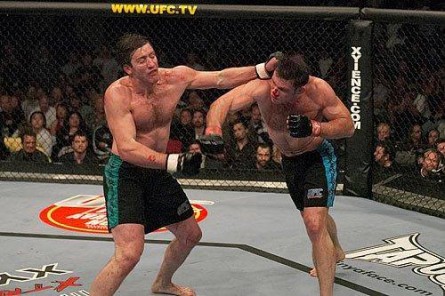
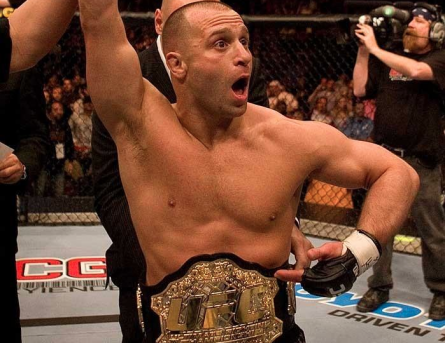
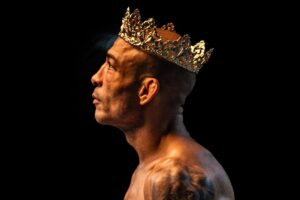
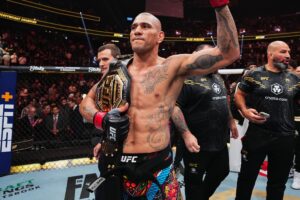
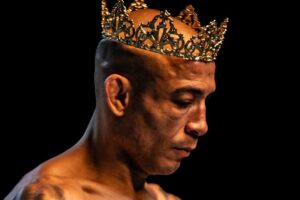
Comments